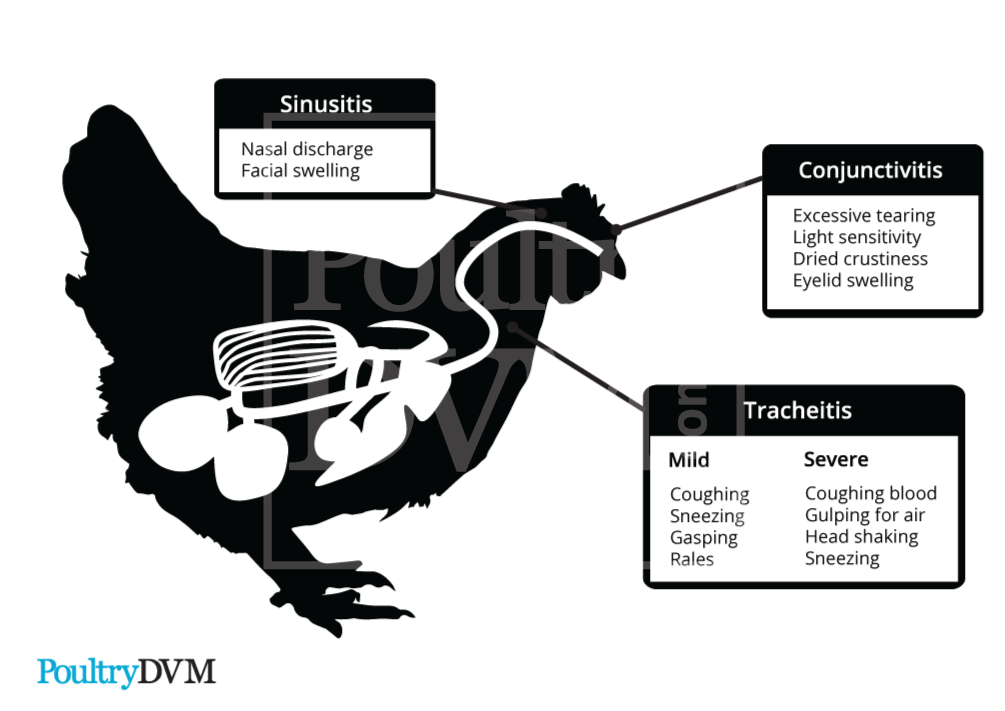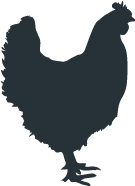Infectious laryngotracheitis (ILT) is a highly contagious upper respiratory tract disease of chickens and occasionally, pheasants and peafowl. It is caused by the infectious laryngotracheitis virus (ILTV), also known as Gallid herpesvirus 1 (GaHV-1). The virus replicates in the conjunctiva and tracheal mucosa, during the first week of infection. The epithelial cells lining the larynx and trachea are always affected, while the respiratory sinuses, air sacs, and lung tissues may or may not be affected.
There are two main forms of infectious laryngotracheitis which occur in chickens, a severe acute or epizootic form and a mild form.
- Severe or epizootic form: Causes significant respiratory distress, haemorrhagic tracheitis, blood-mixed mucus expelled by head shaking, sneezing, and conjunctivitis. Mortality ranges from 5 to 70%.
- Mild Form: Causes mild to moderate catarrhal tracheitis, sinusitis, and conjunctivitis. It is associated with low morbidity and occasional mortality ranging from 0.1 to 2%.
The ILTV has the ability to establish latency in the chicken's trigeminal ganglin during the lytic phase of infection. It gets reactivated when carriers are stressed.
How is the virus transmitted to chickens?
ILT is spread to flocks through:
- Introducing new chickens to the flock who have received the vaccine, actively infected, or recovered carriers. Vaccinated and recovered chickens will only shed the virus in their feces when subjected to stressful conditions. Actively infected chickens will transmit the virus mainly through respiratory secretions and airborne particles from coughing or sneezing.
- Indirect transmission through contaminated people or fomites (equipment, clothes, hands, bedding litter, etc.)
- Improperly burying dead carcasses, making them accessible to wild animals or domestic cats and dogs.
What is the incubation period?
The incubation period of infectious laryngotracheitis virus is 3-14 days. Chickens who receive the ILT vaccine are capable of infecting non vaccinated birds with the milder field strain of ILT contained within the vaccine. Vaccinated birds will shed the virus in their feces for up to 14 days following inoculation.
How long does the virus survive in the environment?
ILT virus can live for 8-10 days in droppings and up to 70 days in carcasses at ambient temperatures of 13-23ºC. The virus lasts longer in the winter due to the cool temperature. The virus may survive for up to 80 days in tracheal exudate (throat exudate) on non-conductive material such as wood if not disturbed. Sunlight, heat and desiccation (drying) are the three natural enemies of the ILT virus. Birds that become infected with ILT carry the disease for life and may manifest signs of infection when under stress.
How is ILT diagnosed?
Infectious laryngotracheitis can be diagnosed by ELISA, virus isolation, indirect fluorescent antibody testing, or by histopathology where intranuclear inclusion bodies are found.

